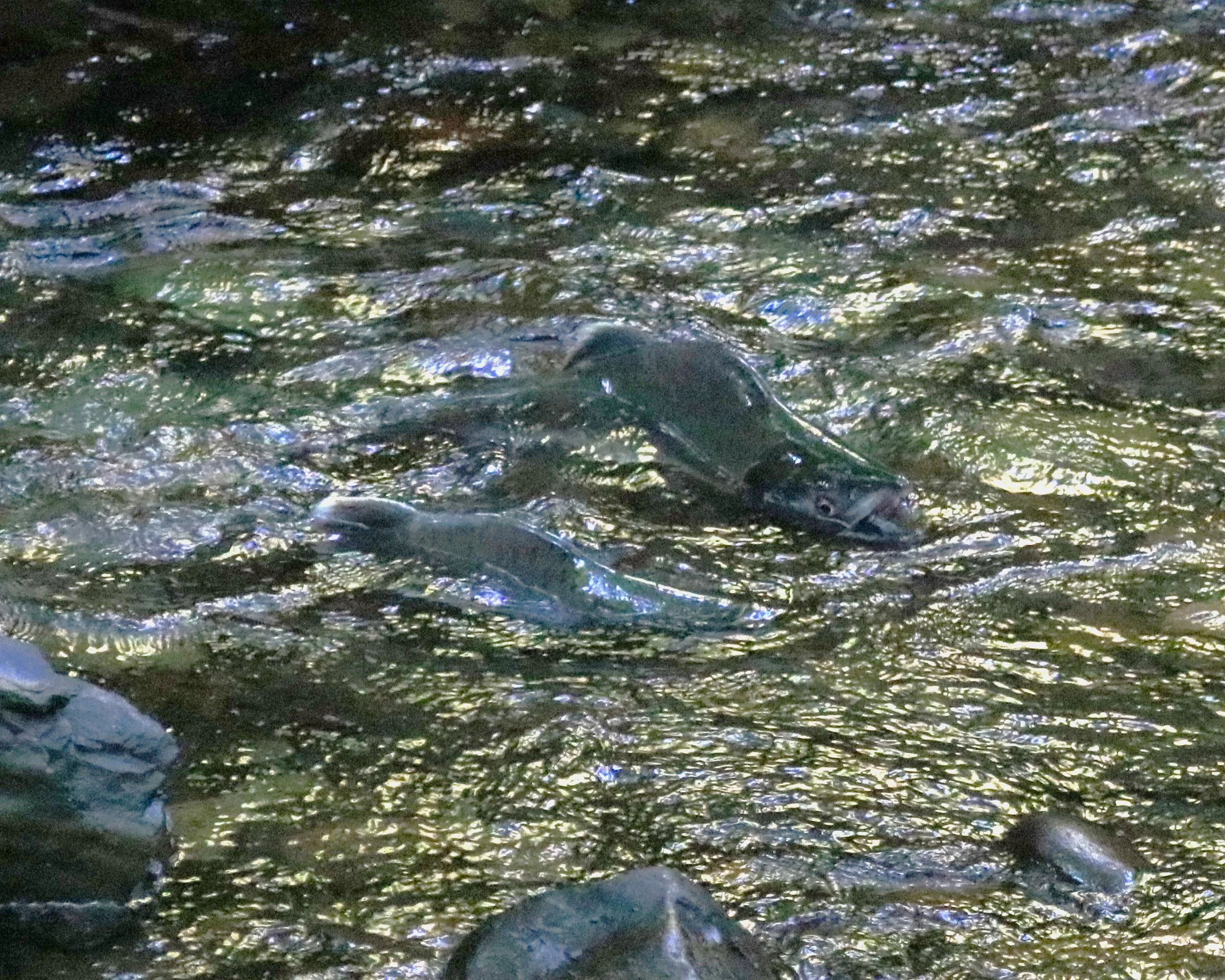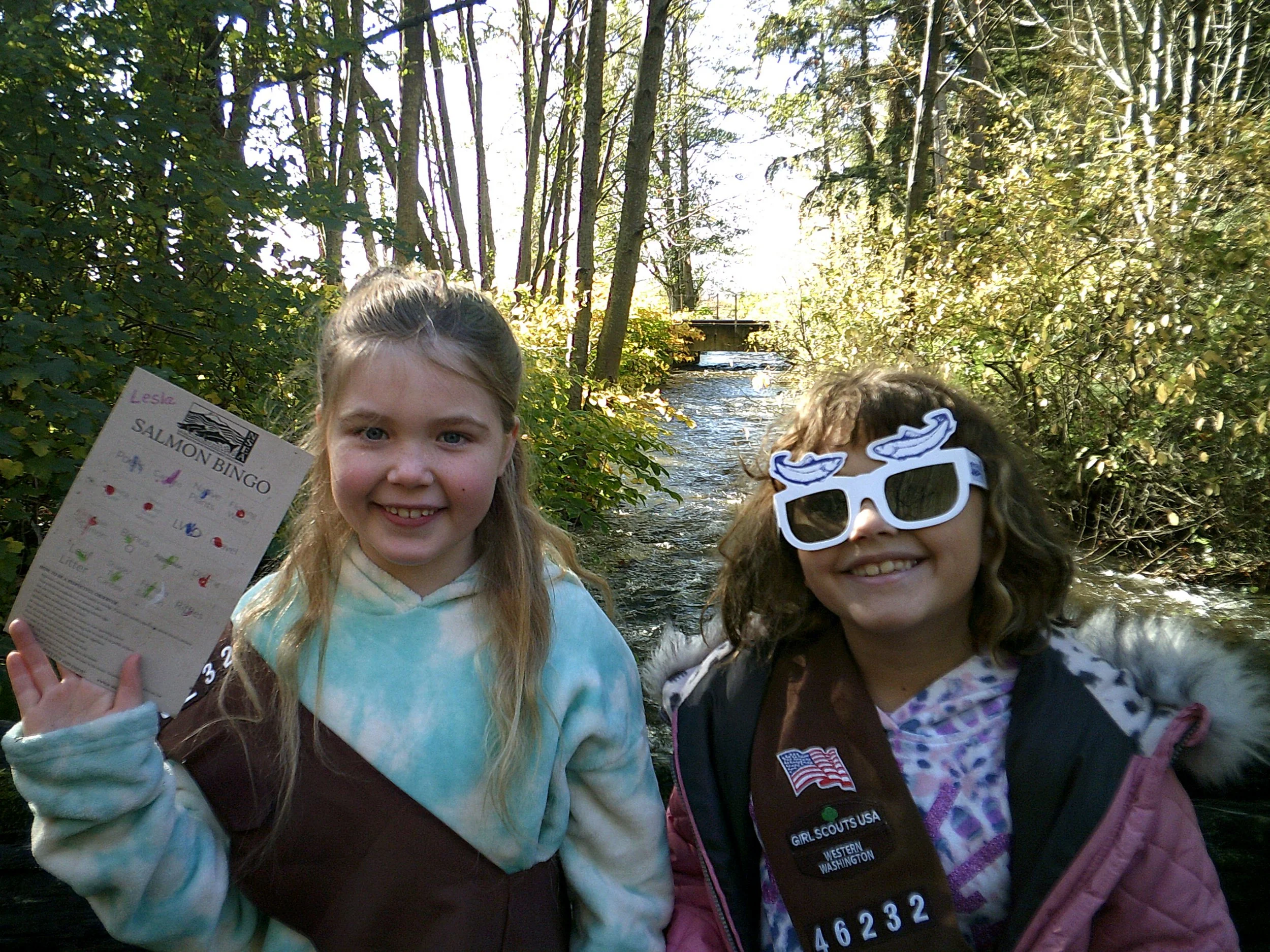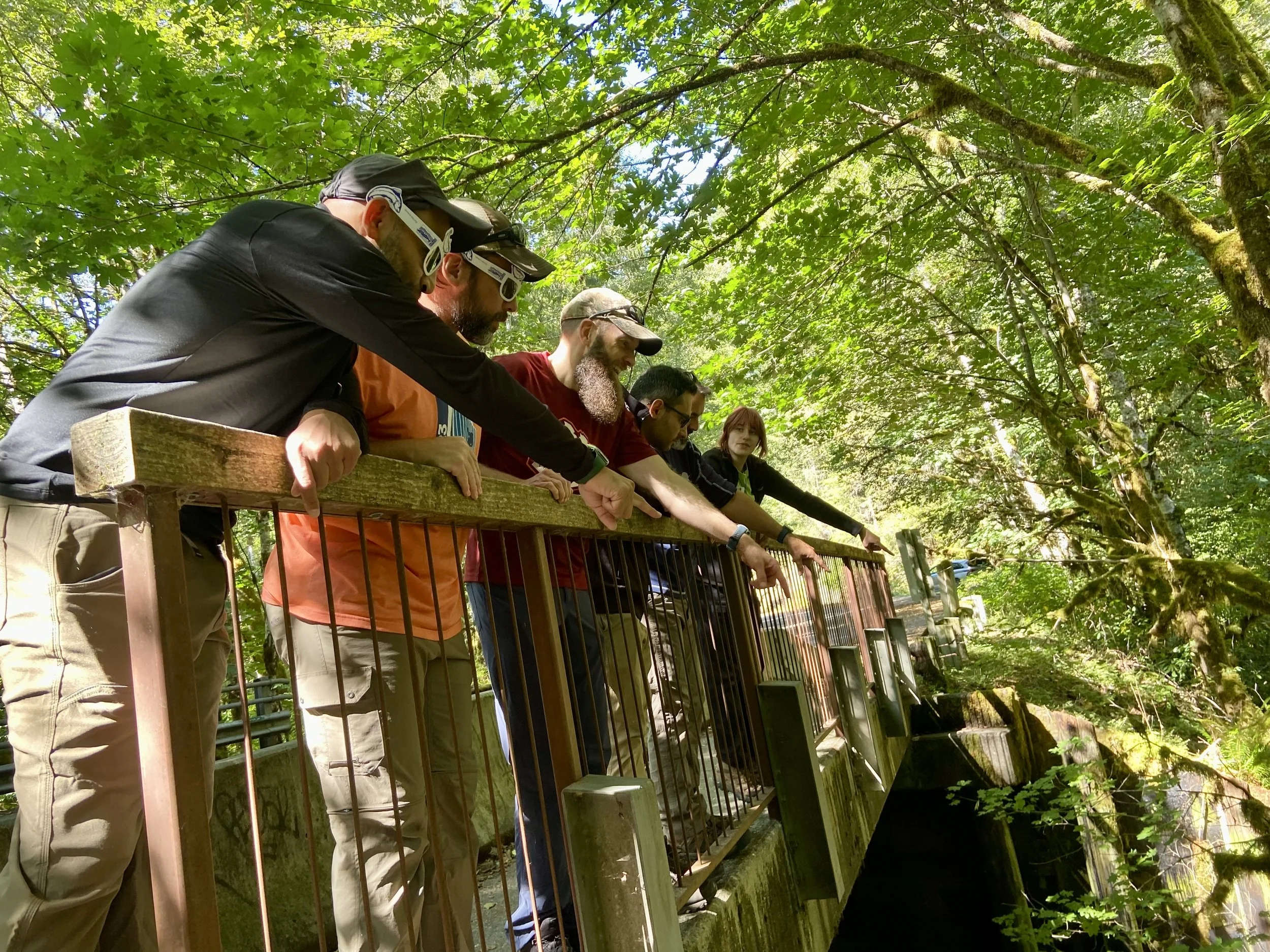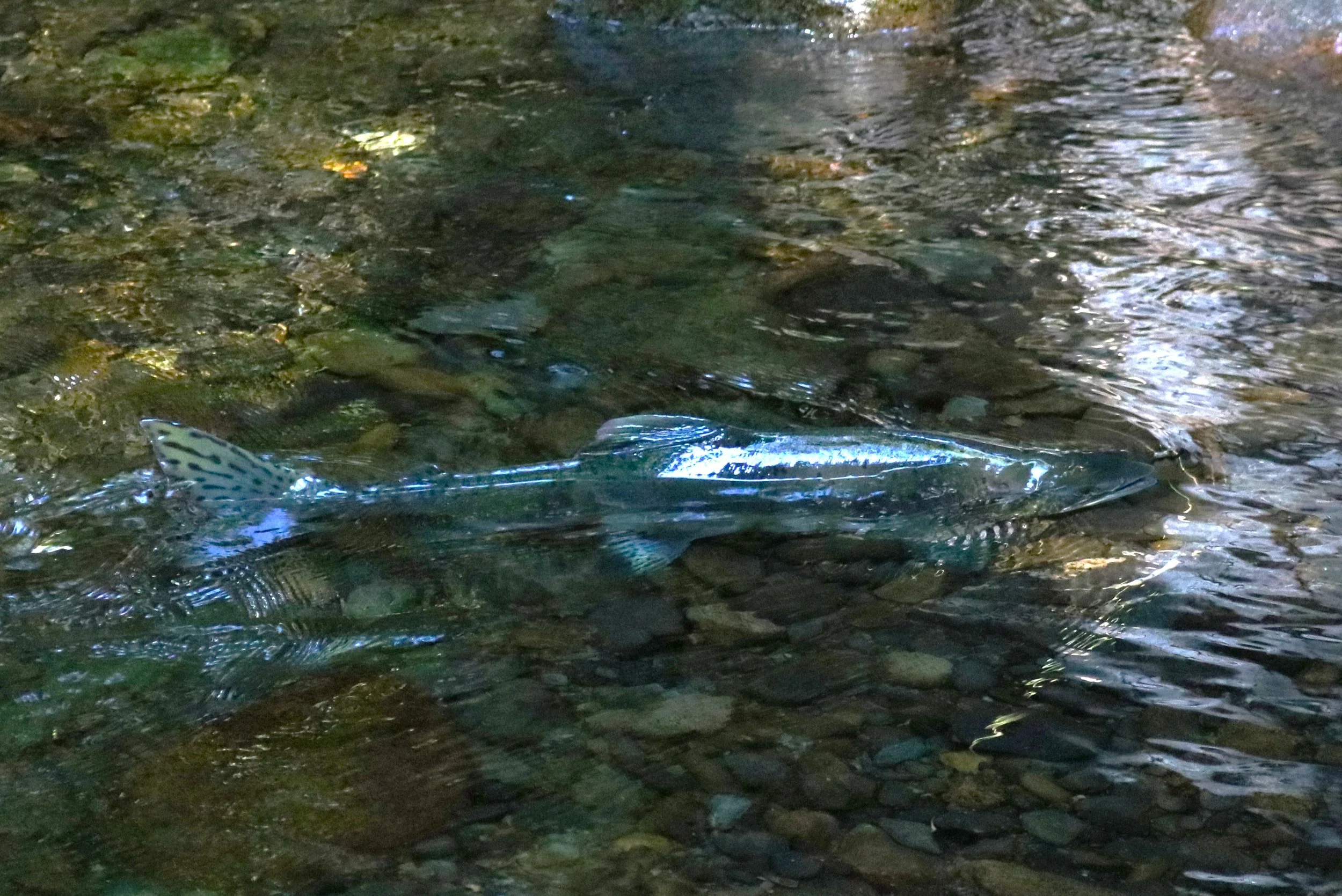Celebrating the Return of Pink Salmon with NSEA
Every two years, something special happens in the Nooksack River, it’s creeks, and tributaries: pink salmon return from the open ocean to the freshwater creeks where they were born. These small but mighty fish complete their lifecycle by spawning, and in doing so, they bring excitement to salmon enthusiasts and wildlife alike. Their return is a natural phenomenon that reminds us of the resilience of wild fish and the ecosystems that support them.
At NSEA, we look forward to this time of year with anticipation. The return of pink salmon is more than a biological event—it’s a community celebration, a teaching opportunity, and a vivid reminder of why we do the work we do.
What Makes Pink Salmon Unique?
Pink salmon (also called humpies due to the distinct hump males develop during spawning) are a bit different from their salmon cousins. While other Pacific salmon species like coho or chinook have more flexible life cycles that vary between three and seven years, pinks are locked into a precise two-year cycle. Every fish that hatches in a pink salmon run returns exactly two years later to spawn.
This unusual rhythm makes pink salmon the smallest of the Pacific salmon species—and the most abundant. They’re prolific by design, and when it’s a pink year, their numbers can be staggering. In 2023, over 7 million pink salmon returned to the Puget Sound region. It’s a dynamic sight that draws curious community members, dedicated volunteers, and salmon nerds alike to streambanks all over Western Washington.
Salmon Sightings Are Back!
To celebrate the pink salmon’s return, we’re once again hosting Salmon Sightings—a free, family-friendly event series designed to connect our community with these amazing fish.
You’ll find us at the Thompson Creek Bridge in Glacier, WA, on Fridays and Saturdays from 10:00am to 2:00pm, between August 22 and September 13. This is one of the most accessible places to spot spawning salmon, especially pinks. Our staff will be there to help identify fish, share salmon science, and answer any questions you have.
Bringing the kids? We’ve got you covered! Stop by our coloring station, test your nature knowledge with a salmon scavenger hunt, and use our special magic pencils to reveal hidden images. (We won’t spoil the surprise, but the pencils are very cool.)
Whether you stay for ten minutes or a couple of hours, a Salmon Sighting is a great way to appreciate local wildlife, ask questions, and soak up the beauty of the North Cascades.
Want to Go Salmon Spotting On Your Own?
We know not everyone can make it to a Salmon Sighting event, so this year, we’re excited to introduce a new resource for self-guided exploration: the Public Salmon Creek Spots Map.
This interactive map includes:
Directions to salmon-friendly public viewing areas
Site access notes (like parking and trail conditions)
A list of salmon species you might see at each location based on state data
Reports of fish that have been seen there by our community volunteers (we call them Salmon Spotters!)
Photos of the sites and the fish
Our goal is to make it easier—and more fun—for people to connect with local waterways and the salmon that call them home. Whether you're new to salmon spotting or a seasoned creek-walker, this tool offers insight and inspiration.
A Few Friendly Reminders
If you're planning to go salmon spotting, either with us or on your own, here are a few things to keep in mind:
Practice Leave No Trace. Stay on designated trails, pack out what you pack in, and avoid stepping into streams.
Keep a respectful distance. Salmon are wild animals. Give them space to complete their final journey.
Be patient. Salmon are sensitive to water temperature, flow, and timing. Some days they show up in droves, and others they’re more elusive.
Even if you don’t see salmon, you’re still spending time in nature—and that’s always worthwhile.
Dogs and Spawning Salmon Don’t Mix – leave your buddy at home
Stress to the Fish
Spawning salmon are in a fragile, final stage of life. Even small disturbances—like movement near the water—can cause them to abandon their nests (redds) or burn precious energy. The sight, smell, or sound of a dog nearby can startle salmon, disrupting this critical process.
Wildlife Safety
Many salmon-bearing creeks are also home to other wildlife—birds, amphibians, even bears—who may be present or watching from the margins. Dogs can inadvertently chase, bark at, or disturb these animals.Water Contamination Risks
Even the most well-behaved dog might wade into a stream to cool off or explore. This can destroy salmon nests, stir up sediment that suffocates eggs, or introduce bacteria and waste into sensitive habitats.People and Pet Conflicts
Not everyone at the event may be comfortable around dogs, and some kids may be afraid or allergic. Keeping the focus on fish (not furry distractions) helps create a safer, more inclusive space for all visitors.Salmon Poisoning Disease (SPD)
Gentle reminder that raw salmon, trout and maybe salamanders can make your dog extremely ill or kill them if left untreated. A salmon may contain a bacteria transmitted by a parasitic fluke. Dogs like smelly things. They roll in them, sniff, them, maybe even eat them. Dogs may try to chase a live fish in a shallow creek bed.
Share What You See!
Have you spotted salmon in a local creek? We want to know! Your sightings help us track salmon activity across Whatcom County and keep our community map up to date.
Send a note (and a photo, if you have one) to our Stewardship Program Manager, Sarah Brown, at sbrown@n-sea.org. Whether it’s one fish or a full-blown salmon parade, we’re always excited to hear what you’ve seen.
And tell your friends. Salmon are essential to Whatcom County. The more people get a chance to witness these phenomenal creatures the more likely they are to care for them.
The pink salmon run is a reminder that even the smallest fish can make a big impact. Their return brings nutrients to our forests, food for wildlife, and joy to communities that care deeply about clean water and healthy ecosystems.
We hope you’ll join us this salmon season—at a Salmon Sighting, on a streamside walk, or simply by sharing your enthusiasm with a friend or neighbor. The more we learn and observe together, the stronger our connection to the waters that sustain us all.
See you by the creek!
By Sarah Brown & Amy Johnson







